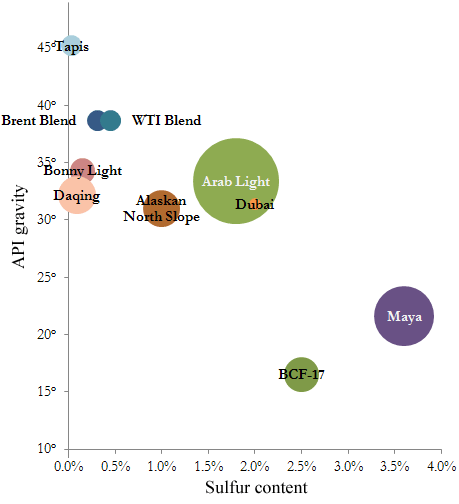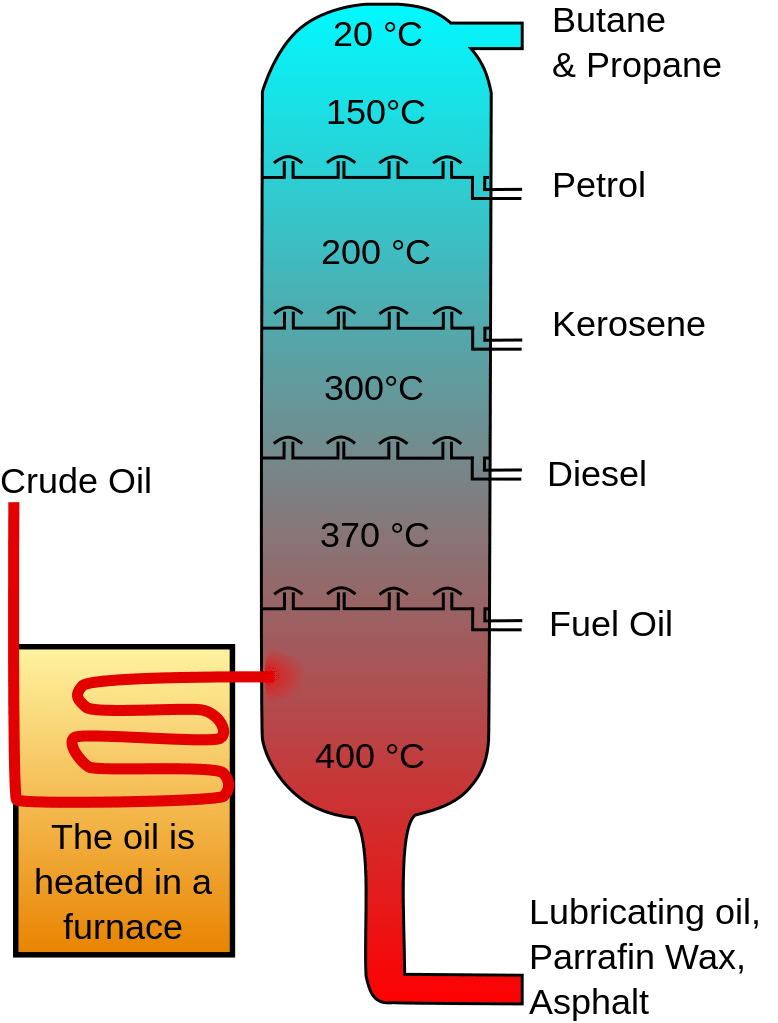

The petroleum industry generally classifies crude oil by the geographic location it is produced in (e.g. West Texas Intermediate, Brent, Oman, etc.), its API gravity (an oil industry measure of density), and its sulphur content.
Crude oil may be considered light if it has low density or heavy if it has high density; and it may be referred to as sweet if it contains relatively little sulphur or sour if it contains substantial amounts of sulphur.
The geographic location is important because it affects transportation costs to the refinery.
Light crude oil is more desirable than heavy oil since it produces a higher yield of gasoline, while sweet oil commands a higher price than sour oil because it has fewer environmental problems and requires less refining to meet sulphur standards imposed on fuels in consuming countries.
Each crude oil has unique molecular characteristics which are revealed by the use of Crude oil assay analysis in petroleum laboratories.
Crude oil is usually found mixed with other liquid, gaseous and solid hydrocarbons and is known as Petroleum. Besides oil wells there are also gas wells: these produce predominantly natural gas but may contain heavier hydrocarbons (pentane, hexane, and heptane) that, in their gaseous state, at surface conditions, will condense out of the gas to form "natural gas condensate", often shortened to condensate. Condensate resembles gasoline in appearance and is similar in composition to some volatile light crude oils.
The proportion of light hydrocarbons in the petroleum mixture varies greatly among different oil fields, ranging from as much as 97 percent by weight in the lighter oils to as little as 50 percent in the heavier oils and bitumens.
Crude oil can be refined to produce usable products such as gasoline, diesel and various forms of petrochemicals. According to the composition of the crude oil and depending on the demands of the market, refineries can produce different shares of petroleum products. The largest share of oil products is used as "energy carriers", i.e. various grades of fuel oil and gasoline. Fuels include, or can be blended to give, gasoline, jet fuel, diesel fuel, heating oil, and heavier fuel oils. Heavier (less volatile) fractions can also be used to produce asphalt, tar, paraffin wax, lubricating and other heavy oils. Refineries also produce other chemicals, some of which are used in chemical processes to produce plastics and other useful materials. Since petroleum often contains a few percent sulphur-containing molecules, elemental sulphur is also often produced as a petroleum product. Carbon, in the form of petroleum coke, and hydrogen may also be produced as petroleum products. The hydrogen produced is often used as an intermediate product for other oil refinery processes such as hydrocracking and hydrodesulphurization.

